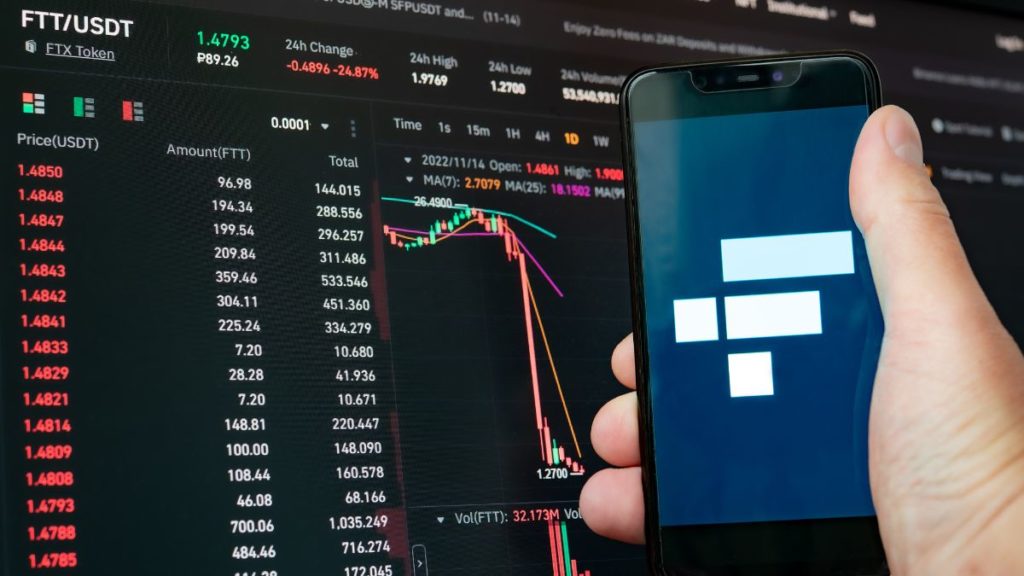The FTX bankruptcy has made headline news both within the crypto industry and the broader news environment. This is a topic that has been generating a lot of buzz lately and for good reason. FTX Exchange was one of the biggest cryptocurrency exchanges in the world, and its bankruptcy has left investors reeling. In this article, we will explore what led to FTX’s downfall, and discuss what it means for the future of the cryptocurrency market.
The Rise of FTX and Alameda Research
To better understand the FTX bankruptcy in its entirety, it’s important to revisit the rise of these two companies as their relationship was inextricably tied. FTX Exchange was launched in May 2019 by Alameda Research, a quantitative trading firm founded by CEO Sam Bankman-Fried and CTO Gary Wang.
Early on, FTX positioned itself as a crypto derivatives platform offering traders access to popular crypto assets like Bitcoin (BTC), Ethereum (ETH), and Ripple (XRP). This strategy allowed FTX to quickly become one of the larger cryptocurrency exchanges in the world. In July 2021, it had over one million users. This number was expected to grow as the firm began aggressively marketing FTX and launching new features, such as its FTX Token (FTT).
The FTX Token (FTT) will play a pivotal role in the collapse of this exchange and we’ll go over this in detail later on in this article. For now, we can explain FTX Token (FTT) as a cryptocurrency that the firm created to incentivize FTX customers by rewarding them with various benefits such as trading discounts.
Speculators bought the token believing that the value of the FTX Token (FTT) would rise in value as the exchange became more popular. The FTX Token (FTT) also had a burn mechanism where the founders were expected to reduce the supply of FTX Token (FTT) tokens as the months progressed, leading some investors to believe that the FTX Token (FTT) would become more valuable over time.
FTX and Alameda Research were able to rise quickly in terms of popularity and user base due to efficient marketing and the ability to raise capital seamlessly. During the crypto bull run of 2021 and early 2021, capital investments were easily accessible and as one of the leading crypto derivatives platforms, FTX was able to capitalize on this opportunity by raising hundreds of millions in venture capital.
Some can attribute the careless investing style of this frenzied approach from some of the most prominent investors such as Sequoia Capital to the bull market itself. However, in hindsight, SBF’s public persona must have also played a role.
News outlets announced him in high regard. Through his effective altruism, FTX was able to attract more investors who believed FTX would be the next big thing in crypto. People liked his modest approach to living within his means and seemingly caring about animals and the environment. This led to the rise of FTX and Alameda Research to the top of cryptocurrency exchange rankings.

Who Is Sam Bankman-Fried?
Sam Bankman-Fried is the CEO and founder of FTX Exchange. He was an early adopter of cryptocurrency trading, becoming involved in the space back in 2017 when Bitcoin first skyrocketed to $20,000.
Before FTX, he was already a successful entrepreneur and investor, having founded Alameda Research in 2017 and leading the company to become an active participant in the cryptocurrency market. SBF got its start to success by arbitraging the inefficiencies of various crypto exchanges.
For example, Bitcoin could be worth $10,000 on a Japanese exchange but $9,000 on a Singaporean exchange. SBF was one of the first to recognize these inefficiencies and began profiting heavily from them by buying the cheapest Bitcoin and selling it for the highest price on another exchange. Minus the fees, this would amount to a huge profit. Although this is the main consensus on how SBF made his early fortune, there are still questions about how he got his initial capital.
Regardless, FTX was established in 2019 and quickly rose to the top of cryptocurrency exchange rankings due to SBF’s effective leadership and the FTX Token (FTT). He quickly became a legendary figure in the crypto space, amassing a huge following and becoming one of the most recognizable figures. He is also well-known for his philanthropic efforts, donating millions of dollars to various charities.
As a Stanford graduate, he was destined for achievement early on in his young career and with his early success as a trader, the mainstream public viewed him as a respected leader in the crypto industry.
FTX Exchange Goes Mainstream
In 2022, FTX began skyrocketing to mainstream appeal as the firm sponsored legendary athletes and celebrities such as Tom Brady. Along with a Superbowl commercial, FTX sponsored a Miami sports arena, renaming it FTX Arena. This was an appropriate change from American Airlines Arena as 2021 was the year when the flight wasn’t popular but cryptocurrency was.
As a centralized exchange, FTX was able to provide users with the ability to trade FTX tokens (FTT) as well as other cryptocurrencies. The benefit of being a centralized exchange was that the company was able to have a single leader that could quickly make decisions and implement them in the market.
FTX also provided users with a variety of options when trading tokens as it had an impressive selection of products such as futures contracts, options, and perpetual swaps. These products were incredibly popular amongst FTX users as they allowed users to use leverage on their trades and increase potential returns.
Due to this mainstream appeal, many casual crypto traders were drawn to FTX and this caused FTX’s user base to grow exponentially. Unfortunately, this would lead to major losses for depositors in just a few months. Users’ funds being locked in this exchange was a mistake that many first-time crypto users would have to learn the hard way in the coming months.
However, FTX and SBF would have one last run at media glory as the bear market began to crumble other debt-based companies. Debt would prove to be dangerous as collateral was evaporated during the leveraged margin calls. FTX would come in as the saving grace.
FTX Exchange and Alameda Research Buys Out Companies
The main focus of this article is around FTX Exchange and Alameda Research, however, the downfall of a few major crypto players also plays into the story of FTX Bankruptcy. FTX Exchange and Alameda Research were able to capitalize on the opportunities of other exchanges’ failures due to their leverage in the crypto markets.
FTX Exchange and Alameda Research took over bankrupt companies as they were able to offer a solution that other companies couldn’t. For instance, FTX struck a deal with BlockFi which allowed it to provide the former with a $400 million revolving credit facility that included an option to purchase BlockFi for $240 million. However, the firm would inevitably face bankruptcy just a few months later as its new parent company also files for bankruptcy.
….. (and so on).



